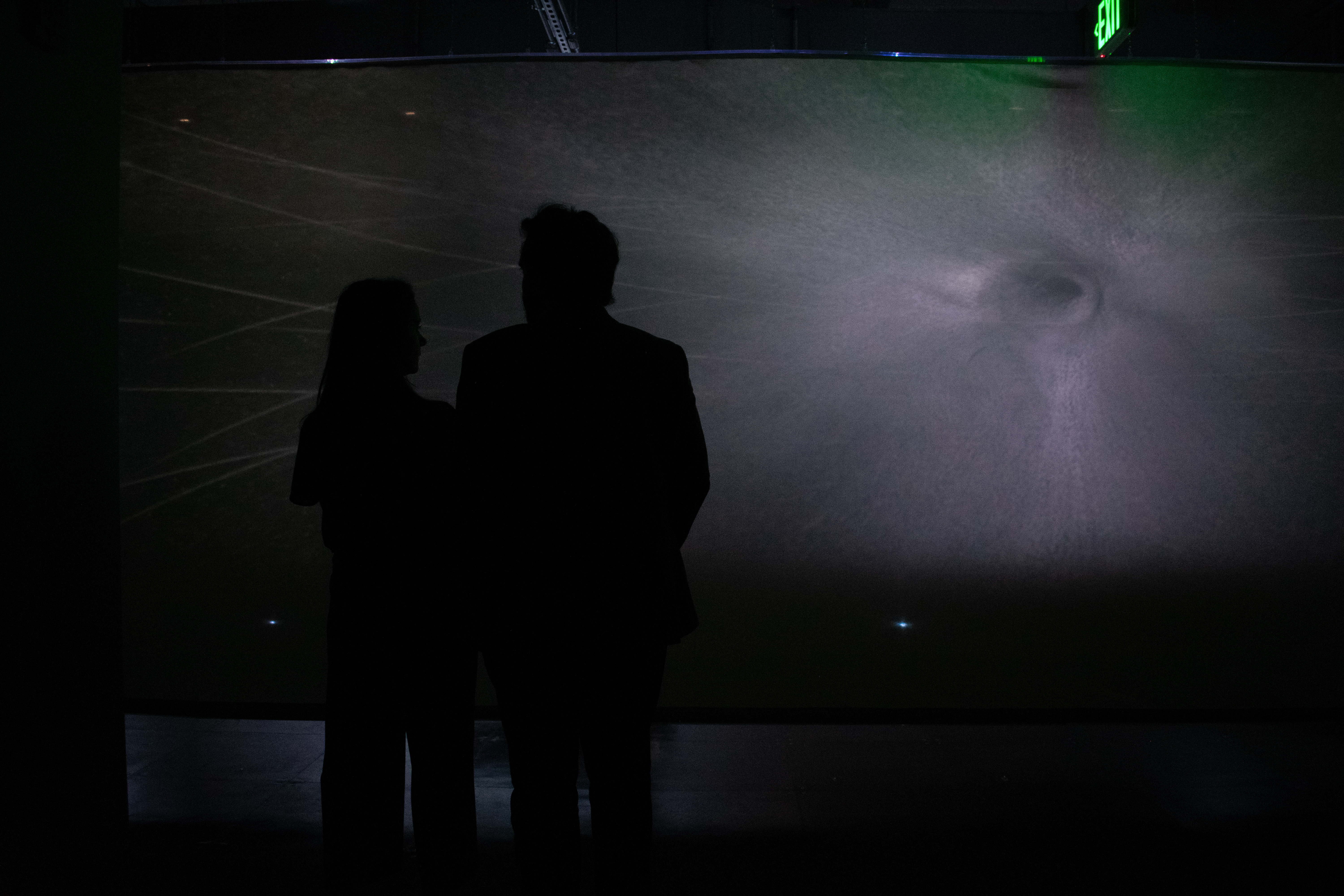
(foto: Doug Combe, Michigan State University Museum)
In collaboration with Simon Rydén
Monumentum, through an artistic lens, rewrites the monumental portrayal of the creation of humanity, while simultaneously reflecting distinctive aspects of the current state of nuclear astrophysics. Drawing from his engagement with FRIB scientists, Korinsky shares his understanding of the astrophysical and nuclear processes that created all the chemical elements for the Earth and all humans ever born, from the beginning of the Universe in the Big Bang to the ongoing supernova explosions and neutron star collisions.
Though there are still unknown variables in the equations, and current theories form, at best, an incomplete picture of what truly happened, the artists have created a monument based on the best current thought. Monumentum interprets the ways in which FRIB, which hosts one of the most powerful heavy ion accelerators in the world, may shine light on obscure parts of questions about how we came to be.
Using generative tools, the artist maps visual representations of data taken from stars into humanlike forms. Alongside the visualizations, the experience is complemented by immersive audio, that draws on recordings Studio Korinsky made in the experimental site area of the FRIB laboratory and a simulated sound representation of the collisions of neutron stars. It culminates in a moment based on something that happens before the collision, when the neutron stars emit gravitational waves in a frequency that occurs in our hearing range, a remarkable happenstance that further connects us at an emotional level to our universal origins.
Studio Korinsky would like to thank Patrick Taylor and Stefan Kwint for their support in creating the installation. They would also like to thank Pablo Giuliani and Hendrik Schatz for their scientific supervision in FRIB.

(foto: Anthony Valli, Michigan State University)

(foto: Anthony Valli, Michigan State University)

(foto: Doug Combe, Michigan State University Museum)

(foto: Doug Combe, Michigan State University Museum)
